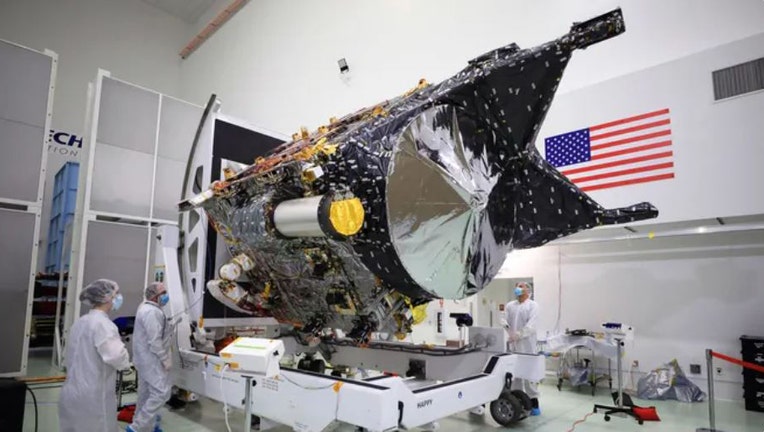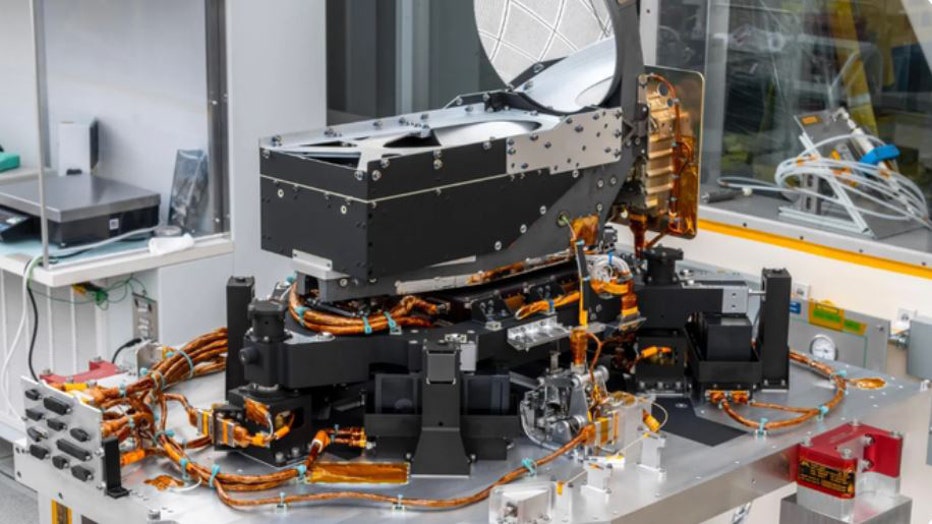Earth receives laser beam message from 10 million miles away

Deep Space Optical Communications system’s gold-capped flight laser transceiver can be seen near center, attached to the Psyche spacecraft. (Ben Smegelsky / NASA)
NASA announced on Wednesday that the agency successfully received data in the farthest-ever demonstration of laser, or optical, communications.
Scientists say that NASA’s Deep Space Optical Communications (DSOC) experiment beamed a near-infrared laser encoded with test data from nearly 10 million miles away – about 40 times farther than the Moon is from Earth – to the Hale Telescope at Caltech’s Palomar Observatory in San Diego County, California.
Known as "first light," this success is a significant stepping stone toward increasing the amount of data that can be transmitted throughout the solar system.
"Achieving first light is one of many critical DSOC milestones in the coming months, paving the way toward higher-data-rate communications capable of sending scientific information, high-definition imagery, and streaming video in support of humanity’s next giant leap: sending humans to Mars," said Trudy Kortes, director of Technology Demonstrations at NASA Headquarters in Washington, D.C.

The Deep Space Optical Communications (DSOC) technology demonstration’s flight laser transceiver is shown at NASA’s Jet Propulsion Laboratory in Southern California in April 2021, before being installed inside its box-like enclosure that was later in
Comparing the upgrade to optical communications to the shift from traditional telephone lines to fiber optics, NASA noted that using optical communications will increase the capacity of state-of-the-art radio systems currently used by spacecraft by 10 to 100 times.
The DSOC experiment is NASA’s first demonstration of optical communications beyond the Moon, the agency said. It is a system that is made of a flight laser transceiver, a ground laser transmitter and a ground laser receiver.
The transceiver rode along NASA’s Psyche spacecraft, which launched on Oct. 13. The spacecraft's primary mission is to reach and study the asteroid Psyche 16, a metal-rich body in the asteroid belt.
NASA'S PSYCHE SPACECRAFT LAUNCHES VIA SPACEX ON MISSION TO STUDY METALLIC ASTEROID
Embedded in the spacecraft was DSOC, which completed a significant milestone within the first phase of its two-phase mission.

